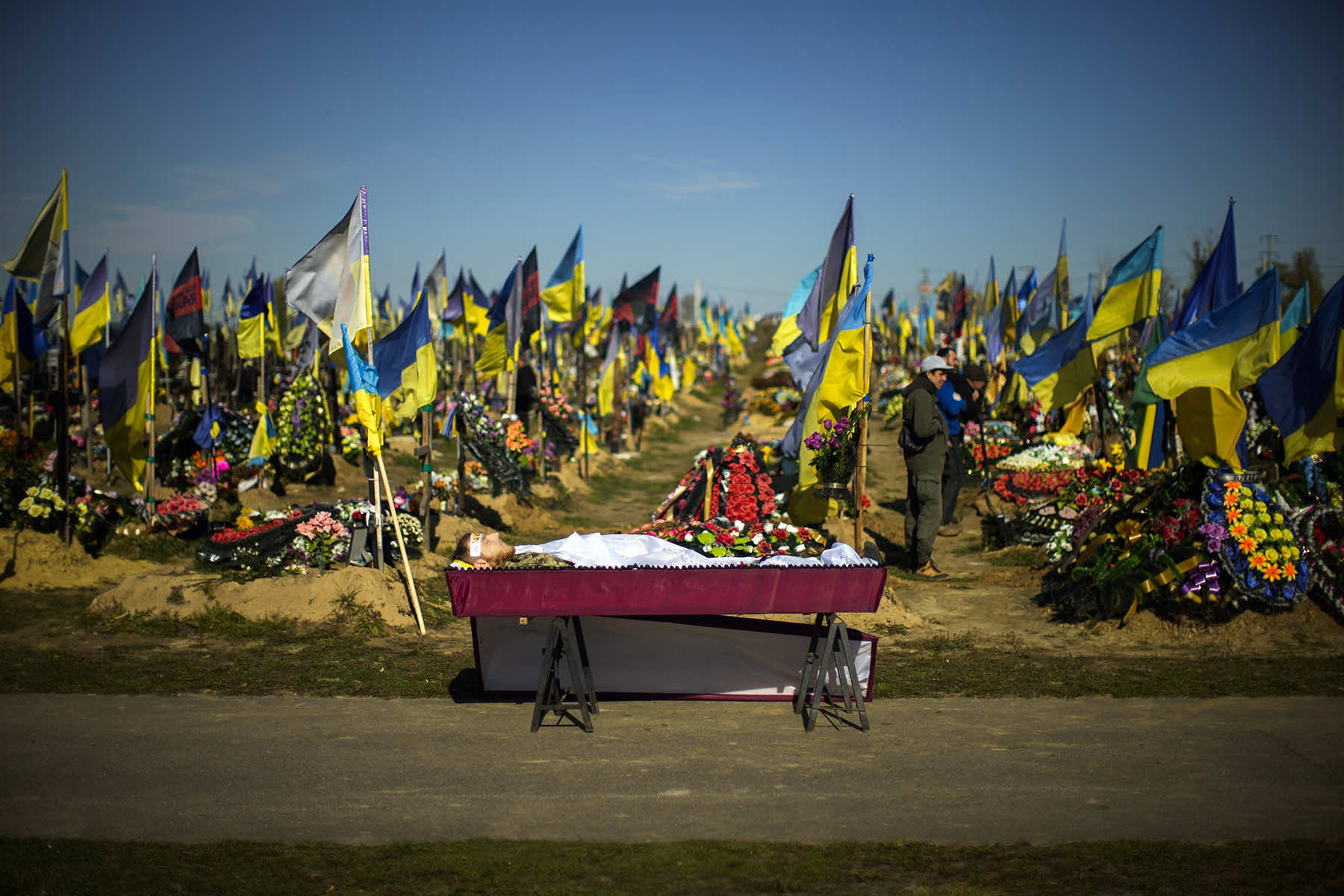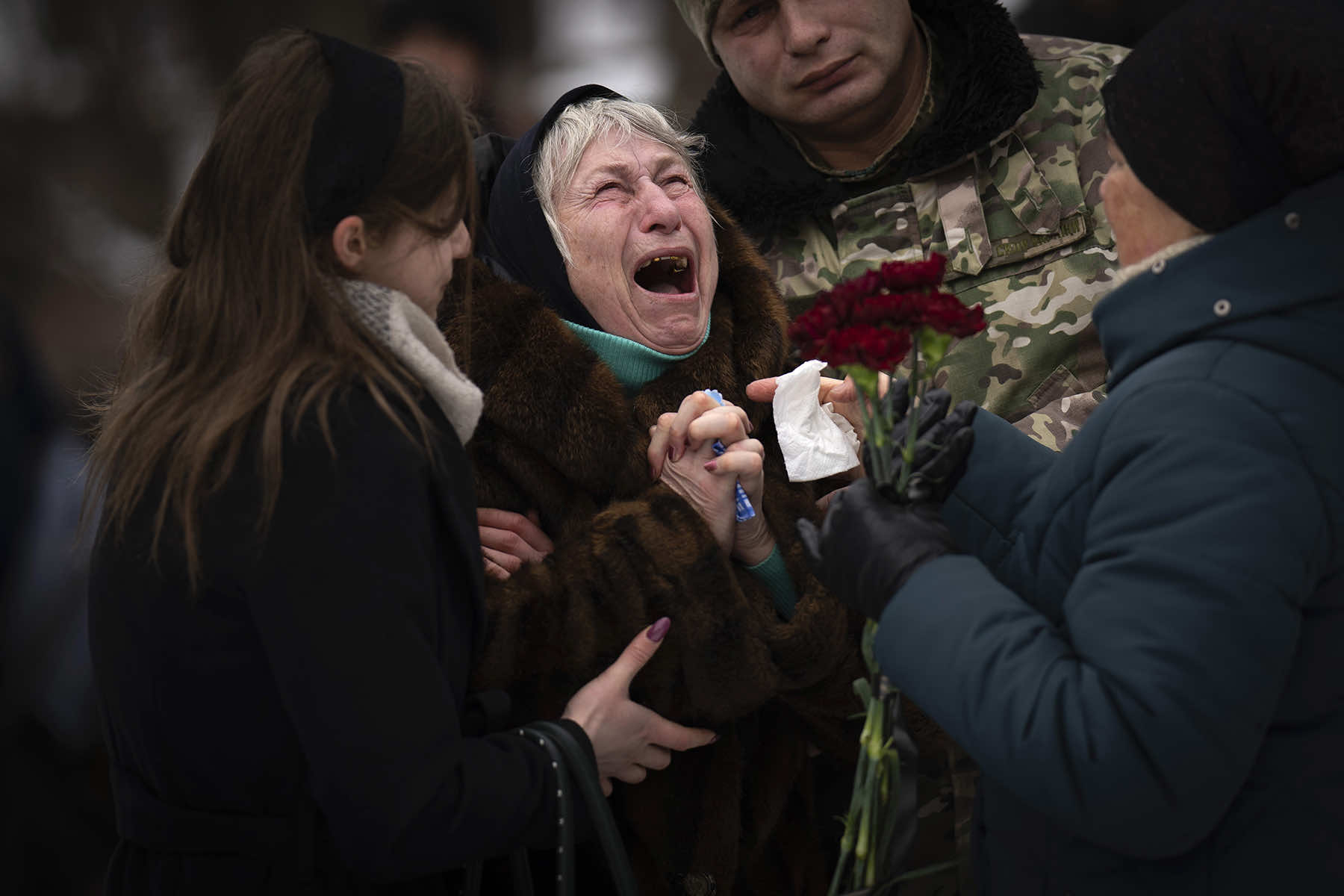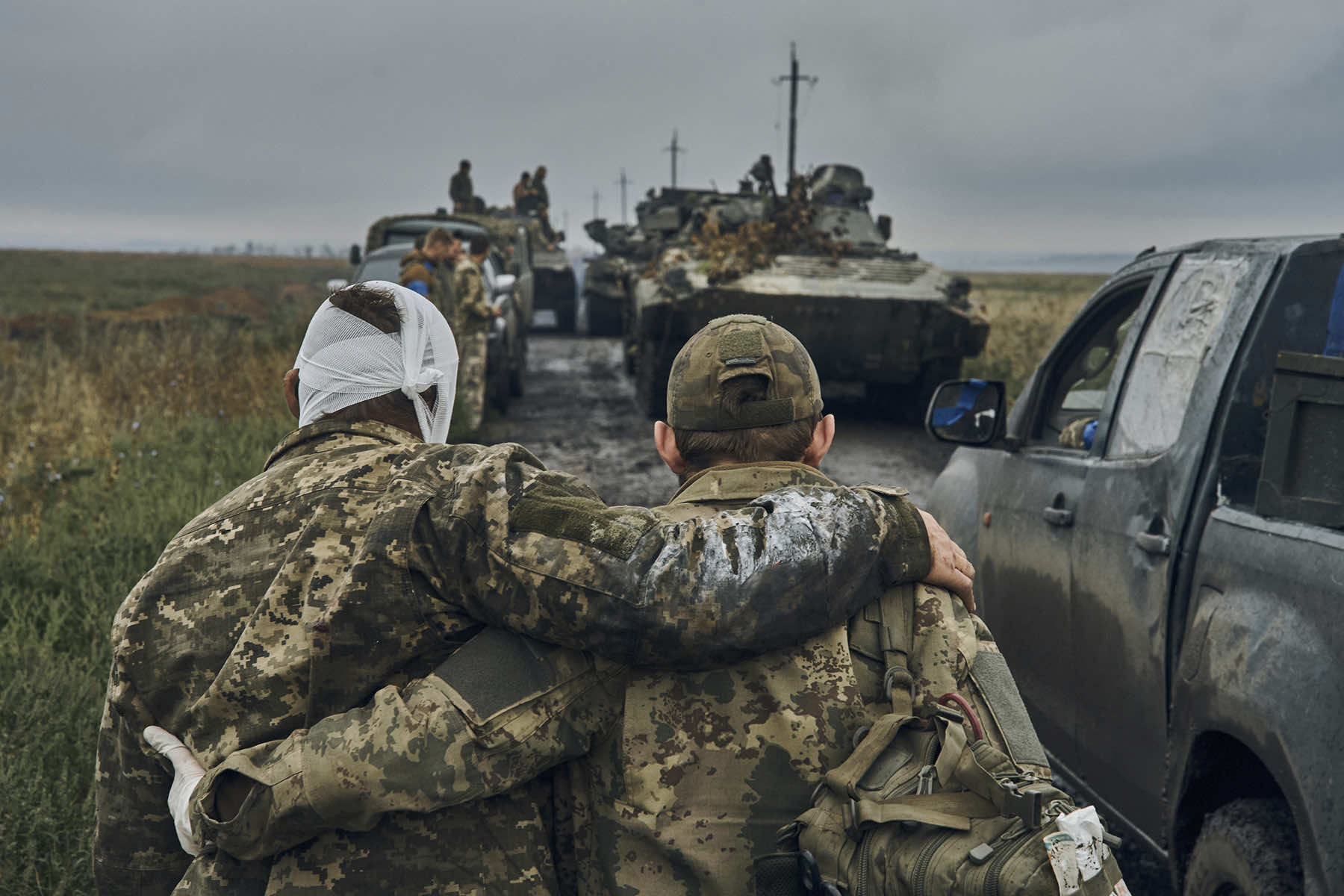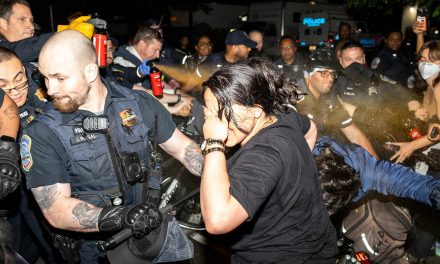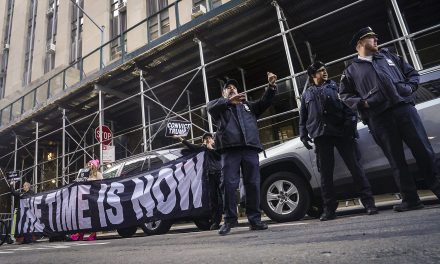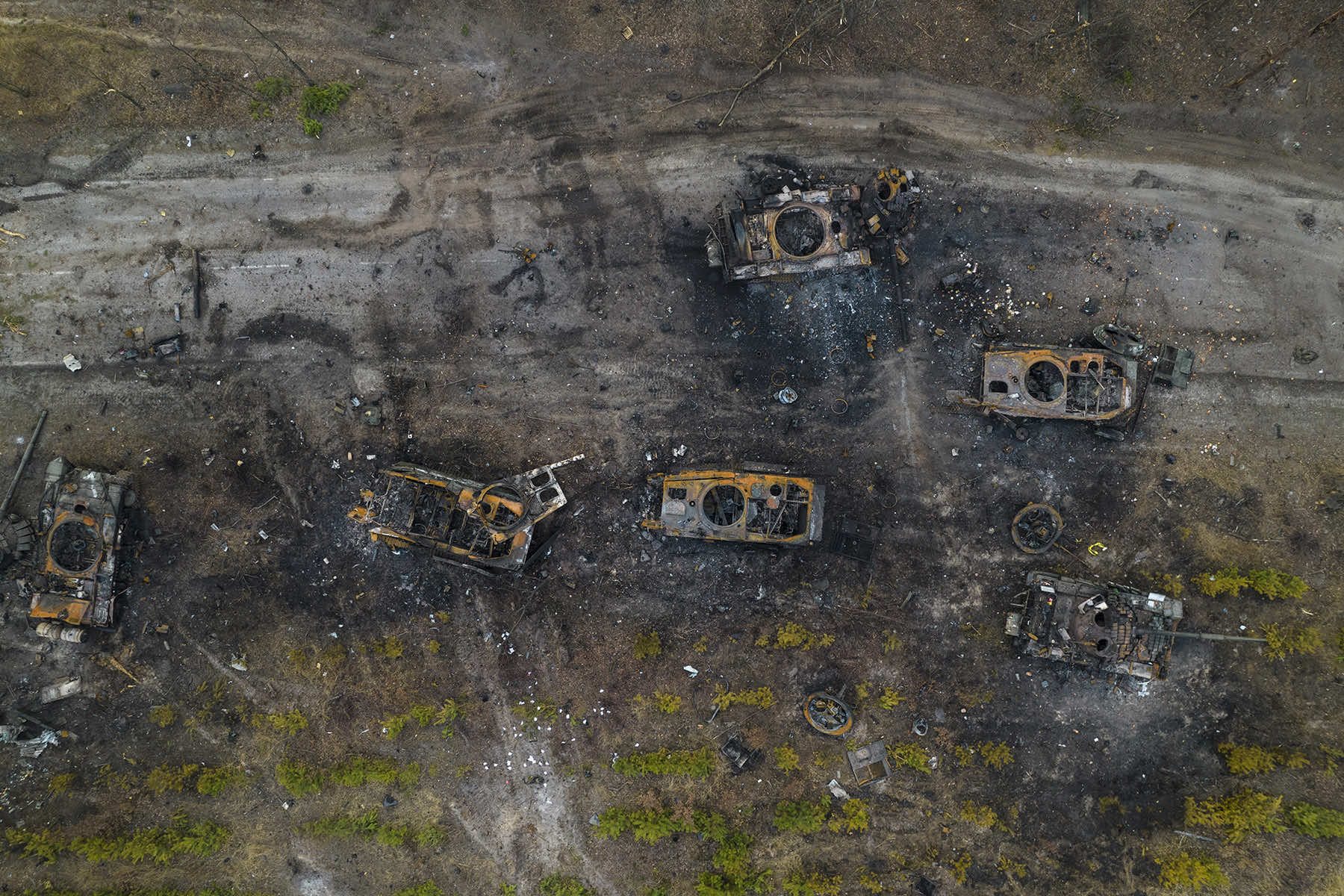
For Russia, it has been a year of bold charges and bombardments, humiliating retreats and grinding sieges. Ukraine has countered with fierce resistance, surprising counteroffensives and unexpected hit-and-run strikes.
On the anniversary of Russia’s invasion that has killed tens of thousands and reduced cities to ruins, both sides are preparing for a potentially even more disastrous phase that lies ahead.
Russia recently intensified its push to capture all of Ukraine’s eastern industrial heartland of the Donbas. Kyiv and its Western allies also say Moscow could try to launch a wider, more ambitious attack elsewhere along the more than 1,000-kilometer (600-mile) front line.
Ukraine is waiting for battle tanks and other new weapons pledged by the West for it to reclaim occupied areas. What is nowhere in sight is a settlement.
The Kremlin insists it must include the recognition of the Crimean Peninsula, which it annexed illegally in 2014, along with the acceptance of its other territorial gains. Ukraine categorically rejects those demands and rules out any talks until Russia withdraws all forces.
While Putin is determined to achieve his goals, Ukraine and its allies are standing firm on preventing Russia from ending up with any of its land.
Experts warn that Europe’s largest conflict since World War II could drag on for years, and some fear it could lead to a direct confrontation between Russia and NATO.
NEW OFFENSIVES, NEW OBJECTIVES
In recent months, Russian forces have tried to encircle the Ukrainian stronghold of Bakhmut and push deeper into the Donetsk region. Along with fulfilling its goal of capturing the entire Donbas, Moscow aims to wear down Ukrainian forces and prevent them from starting offensives elsewhere.
Bakhmut has become an important symbol of tenacity for Ukraine, as well as a way to tie up and destroy the most capable Russian forces. Both sides have used up ammunition at a rate unseen in decades.
Ukrainian military analyst Oleh Zhdanov said Russia has poured more troops and weapons into the Donbas and attacked other areas in an apparent bid to distract Ukrainian forces.
“Russia currently has the initiative and the advantage on the battlefield,” he said, noting Kyiv’s acute shortage of ammunition.
Russia has relied on its massive arsenal, and boosted production of weapons and munitions, giving it a significant edge. While Ukrainian and Western intelligence agencies observed that Moscow is running out of precision missiles, it has plenty of old-style weapons.
But even though Ukraine and its allies expect a wider Russian offensive beyond the Donbas, it could be a gamble for Moscow, which mobilized 300,000 reservists last fall to bolster its forces.
Igor Strelkov, a former Russian security officer who led separatist forces in the Donbas when fighting erupted there in 2014, warned that any big offensive could be disastrous for Russia because its preparation would be impossible to conceal and attackers would face a devastating response. He said an offensive would also raise logistical challenges like those that thwarted Russia’s attempt to capture Kyiv at the war’s start.
“Any large-scale offensive will quickly and inevitably entail very big losses, exhausting the resources accumulated during mobilization,” Strelkov warned.
Justin Bronk, a senior research fellow at RUSI in London, predicted any Russian offensive would fail, but said it could drain Ukraine’s resources and keep it from preparing its own large-scale counteroffensive.
“The big question is how much damage does the Russian offensive do before it runs out of steam, because that will dictate the Ukrainian position,” he said, noting that its aim could be to disrupt Kyiv’s ability to stage a counteroffensive.
Bronk said Ukraine spent the winter building up its mechanized brigades that had spearheaded autumn counteroffensives in the Kharkiv and Kherson regions and suffered losses.
He said Ukraine has a window of opportunity of six to eight months to reclaim more land, noting that Russia could launch another mobilization to recruit up to 500,000 more troops who could be readied for combat after at least six months of training.
Zhdanov said Ukraine could launch a new counteroffensive in late April or early May after receiving new Western weapons, including battle tanks. He predicted Ukrainian forces will likely attack from the Zaporizhzhia region to try to reclaim the ports of Mariupol and Berdyansk and cut the Russian corridor to Crimea.
“If Ukraine reaches the Sea of Azov coast, it will nullify all the Russian gains,” Zhdanov said, turning Putin’s victories “to dust.”
STALEMATE IN UKRAINE OR UPHEAVAL IN RUSSIA?
Observers see little prospect for talks. Both sides are “irreconcilable on their current positions,” said Bronk.
Major Ukrainian battlefield successes this summer could fuel “significant political turmoil in Russia, because at that point, Putin’s own position within the leadership becomes very, very difficult to see as tenable,” he said.
At the same time, if Ukraine fails to reclaim more territory before Russia builds up its troops, it could lead to a “long-term stalemate and sort of a grinding attritional war that just kind of goes on and on,” Bronk added, playing into Moscow’s plan “to prolong the war and just wait for the West to get exhausted.”
Fiona Hill, a senior fellow at the Brookings Institution who served in the past three U.S. administrations, also saw little prospect for a settlement.
“The Russians are digging in for the long haul. They have no intention of losing,” she said. “Putin has made it very clear that he’s prepared to sacrifice whatever it takes. His message there is basically saying you can’t possibly counteract me, because I’m willing to do whatever and I’ve got so much more manpower.”
Hill said Putin is hoping for Western support for Kyiv to dissolve — “that it goes away and that Ukraine is left exposed, and then that Russia can force Ukraine to capitulate and give up on its territory.”
Tatiana Stanovaya of the Carnegie Endowment said Putin continues to believe he can achieve his goals by pressing the campaign.
“For him, the only way he admits it can end is capitulation of Kyiv,” she said.
THE NUCLEAR OPTION
Putin has repeatedly said Russia could use “all available means” to protect its territory, a clear reference to its nuclear arsenal.
Moscow’s nuclear doctrine states that it could use those weapons in response to a nuclear strike or an attack with conventional forces threatening “the very existence of the Russian state,” a formulation that offers broad room for interpretation and abrupt escalation.
Some Russian hawks urged nuclear strikes on Ukrainian bridges and other key infrastructure to force Kyiv and its allies to accept Moscow’s terms.
Bronk said he doesn’t expect Russia to resort to that, arguing it would backfire.
“Actually using them generates almost no practical benefits at all and certainly nothing to compensate for all of the costs, both in terms of immediate escalation risk — irradiating things they want to hold on to and be part of — and also pushing away the rest of the world,” he said.
It would be certain to anger China, which doesn’t want the nuclear taboo broken, he added.
Hill also noted that Russia got some pushback from China and India, who were worried about Putin’s nuclear saber-rattling. She added that Putin sees nuclear threats as a powerful political tool and will keep issuing them in the hope of forcing the West to withdraw support for Ukraine.
“Putin’s just hoping that everybody’s going to blink,” she said. “He’s not going to give up the idea that he could use a battlefield tactical nuclear weapon.”
But Hill added: “If he thought he would get the results that he wanted from it, he would use it.”
Stanovaya, who has long followed Kremlin decision-making, also said Putin’s nuclear threat is no bluff.
If he sees that Ukraine can attack in a way that threatens Russian territory and lead to Moscow’s defeat, “I think he would be ready to use nuclear weapons in a way that he can show that it’s a question of survival for Russia,” she said.

